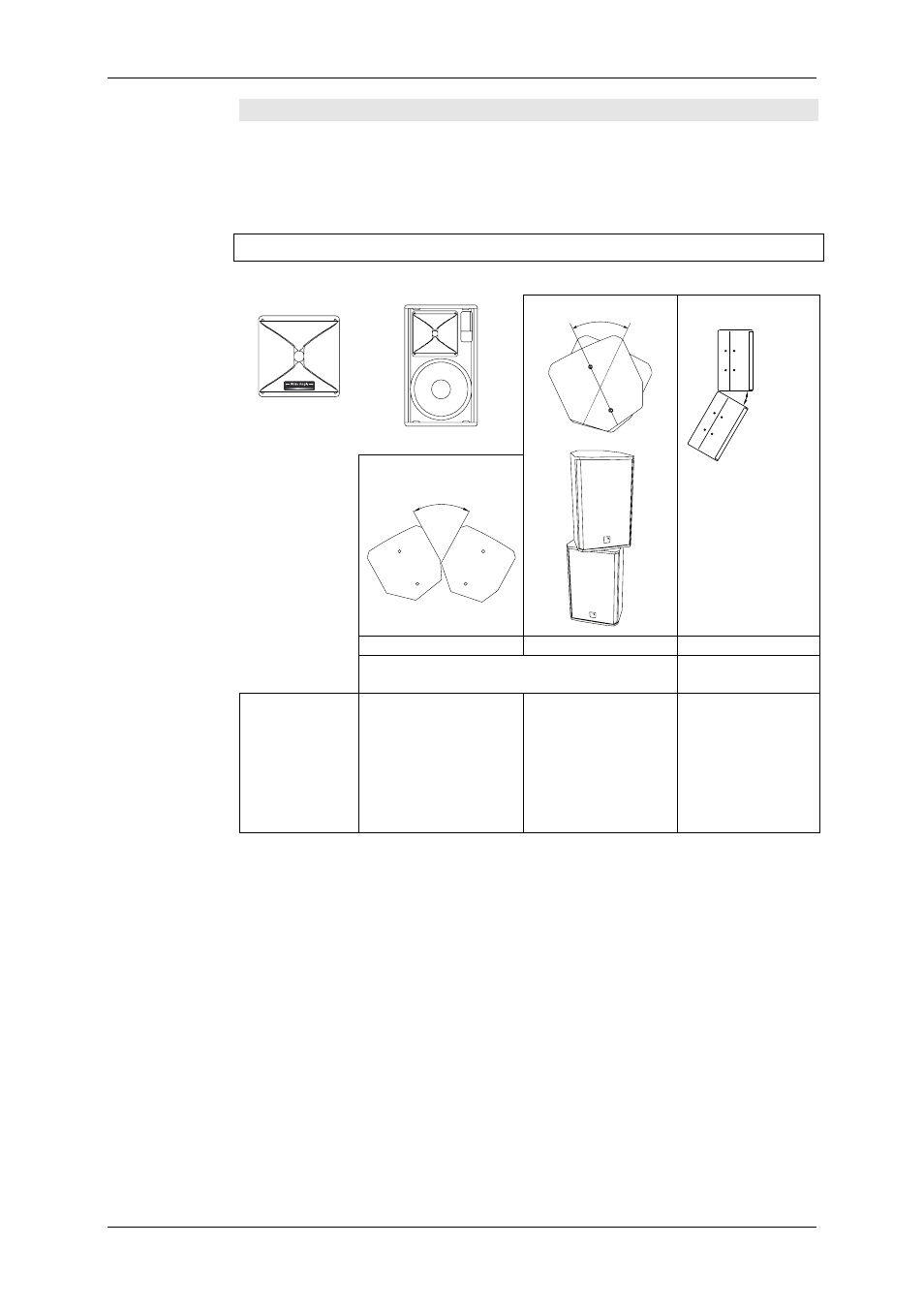Arrayed speaker systems (cluster), Horn not rotated – KLING & FREITAG K&F CA 1001 User Manual
Page 11

User’s Manual
CA 1001
KLING & FREITAG GMBH ©1995 - 2006
Version 3.0, 22.03.2006
Page 11 of 27
7.2
Arrayed Speaker Systems (Cluster)
If the loudspeakers are operated through the optional K&F C2 System Controller, we
recommend turning on the ‘Top Low Cut’ switch for clustered operation. Thus the fre-
quency response for this application can be optimised (see also K&F C2 User's Manual).
When operating the systems without the K&F C2 System Controller in a clustered con-
figuration, the signal level of frequencies below 300 Hz should be reduced by 3-4 dB.
7.2.1
Horn not rotated
*If several 90° systems are clustered, unwanted interference effects may appear. As a
result, we do not generally recommend clustered configurations of CA 1001 systems.
If wide angles are to be covered, we recommend the use of several systems with ro-
tated horns in one cluster.
Horn not
Horn not
Horn not
Horn not
rot
rot
rot
rota
aa
ated
ted
ted
ted
Standing speaker
Standing speaker
Standing speaker
Standing speaker
Angle 1
Angle 2
Angle 3
A smaller angle 3
results in a smaller
vertical coverage
angle but increases
the sound power
level.
Angle
1
Angle 1
Angle 1
Angle 1 Angle
2
Angle 2
Angle 2
Angle 2 Angle
3
Angle 3
Angle 3
Angle 3
50°
not generally recommended*
30°
Application
Increasing the hori-
zontal coverage angle,
e.g. for wide audience
planes
Increasing the hori-
zontal coverage angle
and sound power
level for larger dis-
tances
Increasing the verti-
cal coverage angle,
e.g. for covering
balconies or for
increased sound
power level for
larger distances
